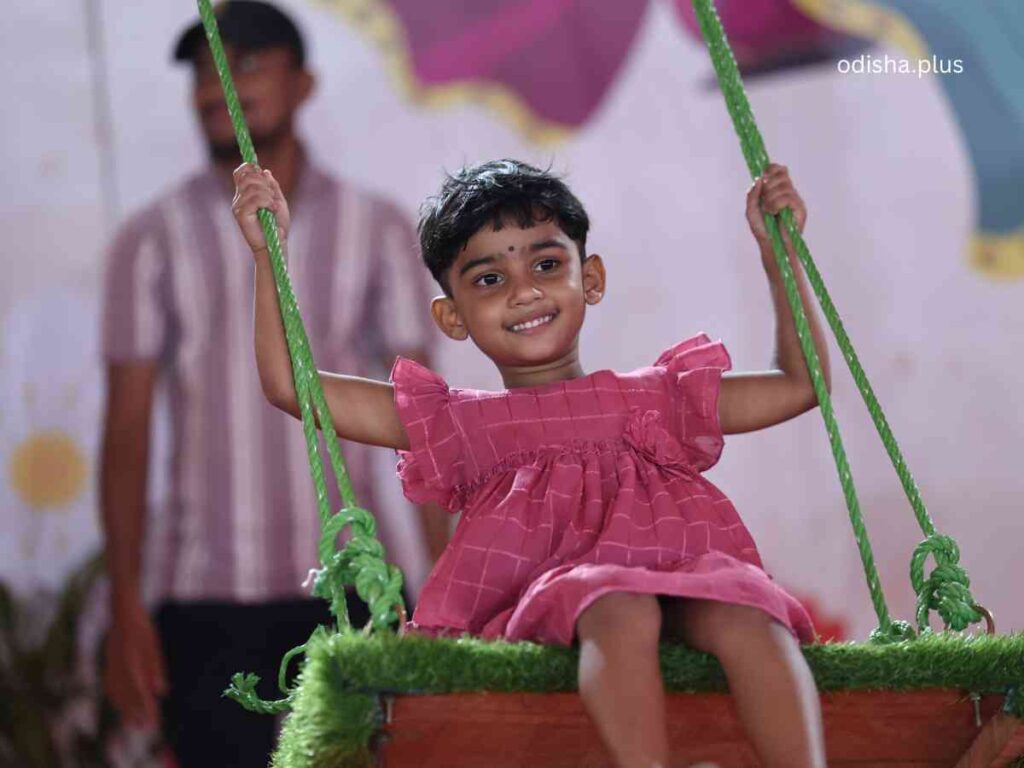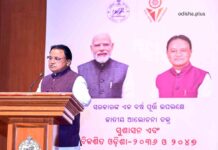Achieving UNESCO ICH tag would place Raja alongside globally recognized cultural practices, safeguarding it for future generations & highlighting its significance
Nilambar Rath

As the joyous echoes of folk songs and the sight of ornate swings (doli) mark the arrival of the Raja festival across coastal Odisha, a leading cultural institution is spearheading a grassroots movement to place this unique celebration on the world map. The ODIART Centre, a new museum on the banks of Chilika Lake, is not only reviving age-old traditions through a community competition but also championing a significant ambition: to secure the coveted UNESCO Intangible Cultural Heritage (ICH) tag for Raja.
Raja, a four-day festival celebrated in mid-June, is a vibrant ode to womanhood and the earth’s fertility, coinciding with the onset of the monsoons. Deeply connected with agricultural traditions, it is a period when women and adolescent girls are celebrated. They take a break from household chores, wear new clothes, indulge in traditional cakes (pithas), and engage in games, symbolizing a unique blend of leisure, nature, and cultural identity.
At the forefront of preserving this rich heritage is the ODIART Centre’s “Aama Gaon Bhari Sundar” (Our Village is so Beautiful and Unique) competition. This community-based initiative encourages villages to actively practice and showcase their traditions during the festival of Raja.
“We launched this initiative in 2024 to encourage communities to preserve and practice their traditional culture during Raja,” says Prasana Dash, a noted art lover and the founder of ODIART Centre.
“This year, the response has been overwhelming, with 80 villages across Puri, Khordha, Ganjam, Cuttack, and Jagatsingpur districts participating. We have shortlisted eight villages and will send a team of experts to select the two best among them.”
The judging criteria focus on the authentic expression of the festival’s core elements. “We are judging the villages under four key parameters,” Dash explains. “This includes how communities decorate their homes and neighbourhoods using traditional means, the preparation of traditional foods, the organization of traditional games, and the hosting of cultural programs like theatre etc.”
The ODIART Centre, with its extensive collection of Odishan art, culture, and history, is committed to promoting the region’s intangible heritage. The “Aama Gaon Bhari Sundar” initiative is a strategic step towards a much larger goal. “We aim to have the UNESCO Intangible Cultural Heritage tag for Raja,” reveals Dash during an interaction with Nilambar Rath, Editor OdishaLIVE and OdishaPlus.
Achieving this status would place Raja alongside globally recognized cultural practices, safeguarding it for future generations and highlighting its significance. The UNESCO ICH tag is granted to traditions, living expressions, and knowledge that are passed down through generations, providing communities with a sense of identity and continuity.
The aspiration for Raja is not without precedent in India. In 2021, ‘Durga Puja in Kolkata’ was inscribed on the UNESCO Representative List of the Intangible Cultural Heritage of Humanity. The recognition celebrated Durga Puja not just as a religious event, but as a grand cultural, social, and artistic phenomenon that unites people across all divides. This successful inclusion of a major festival from Eastern India provides a strong and encouraging model for Odisha’s bid to earn global recognition for Raja.
For Odisha, known as the cultural gateway to eastern India, this recognition would be a monumental achievement. “If Raja can be acknowledged as Intangible Cultural Heritage by UNESCO, it can significantly promote Brand Odisha on the national and international map, attracting domestic and foreign tourists to the state,” Dash notes.
The award ceremony for the competition is scheduled for June 16th at the ODIART museum premises. While ODIART is leading this charge, Dash believes a collective effort is necessary.
“This is a humble initiative by ODIART. The state government should also take steps in apprising the Centre to pursue the idea of getting the UNESCO Intangible Cultural Heritage tag for Raja, as a unique festival of Odisha,” he adds.
In an era where modern lifestyles often lead to a disconnect from age-old traditions, particularly among younger, urban-raised generations, such initiatives are vital. By actively encouraging participation, these efforts help bridge the gap, ensuring that the rich cultural values and practices of the society are preserved and cherished by generations to come.




























